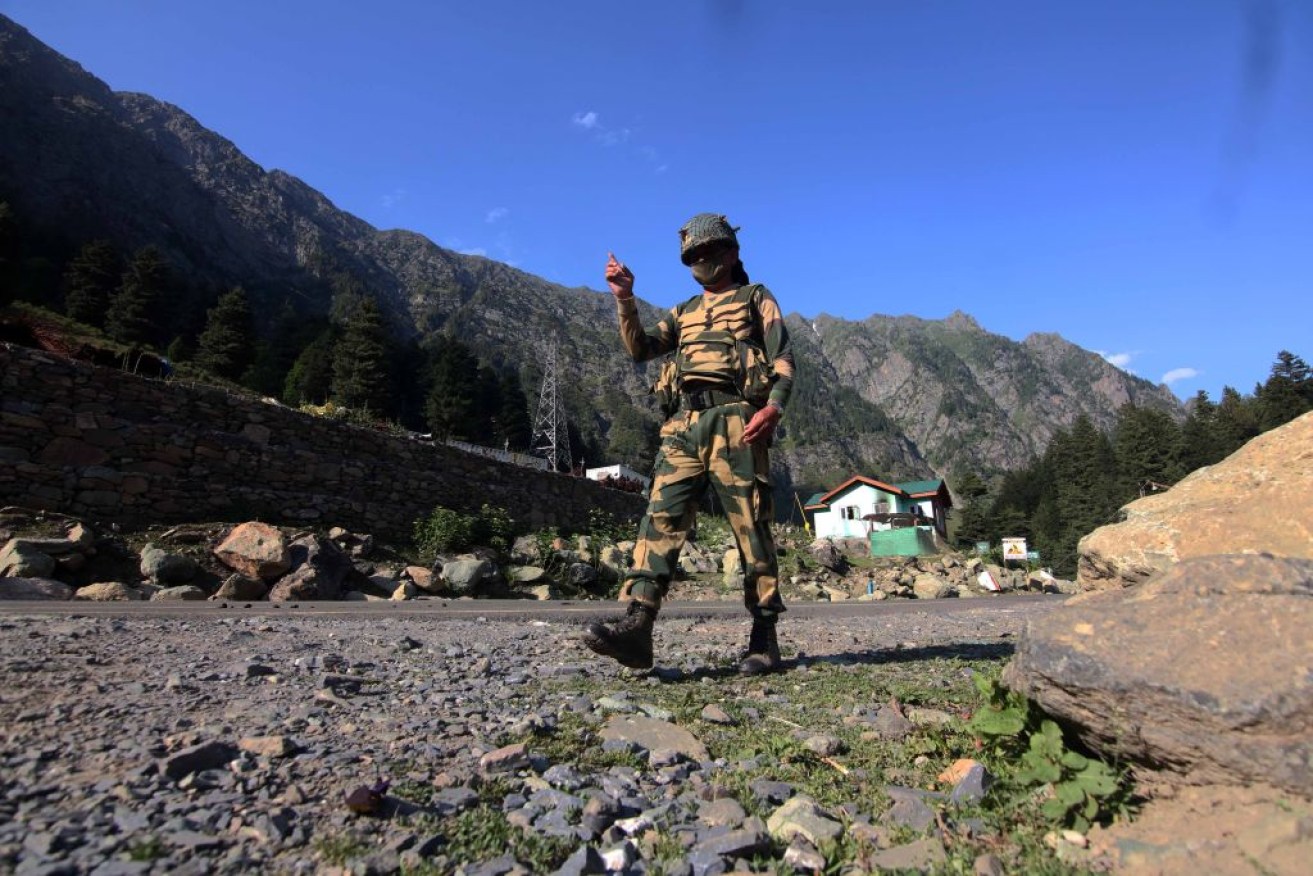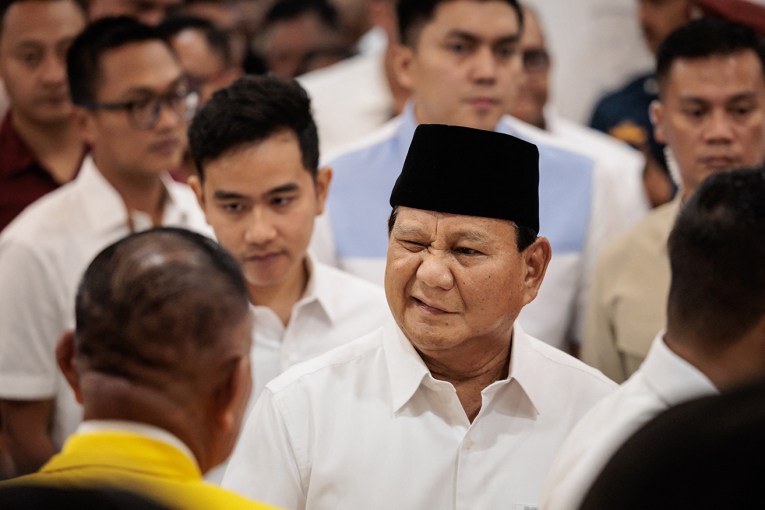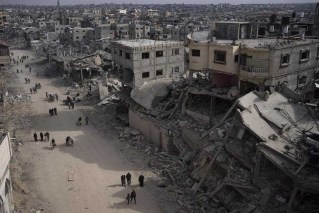Soldiers killed in ‘violent face-off’ between India and China

An Indian Border Security Force soldier walks near a check post along the Srinagar-Leh National highway. Photo: Getty
Another 17 Indian soldiers have died after a hand-to-hand combat clash with Chinese forces, in an escalation of a dispute over the ownership of a part of the Himalayan border.
India’s army raised its death toll from three, and said in a statement the two sides had “disengaged” from the disputed Galwan area.
Chinese state media is reporting that there were “casualties” on its side during the conflict.
The editor-in-chief of China mouthpiece Global Times warned “China doesn’t want to have a clash with India, but we don’t fear it”.
“Based on what I know, Chinese side also suffered casualties in the Galwan Valley physical clash. I want to tell the Indian side, don’t be arrogant and misread China’s restraint as being weak,” tweeted Hu Xijin.
He then wrote the “injured Indian soldiers reportedly died due to lack of in-time rescue, which reflects the serious flaws of Indian army to provide emergency treatment to the wounded”.
“This is not an army with real modern combat capabilities at plateau. Indian public opinion needs to stay sober,” he wrote.
Beijing has not provided details on China’s dead but blamed Indian soldiers for “provocative attacks”.
Chinese side didn’t release number of PLA casualties in clash with Indian soldiers. My understanding is the Chinese side doesn’t want people of the two countries to compare the casualties number so to avoid stoking public mood. This is goodwill from Beijing.
— Hu Xijin 胡锡进 (@HuXijin_GT) June 16, 2020
Indian security officials familiar with latest developments told Associated Press that soldiers from the two sides had been in fist fights and began throwing stones at each other.
No live shots were fired during the clash, they said.
The clash – during which neither side fired any shots, according to Indian officials – is the first deadly confrontation between the two Asian giants since 1975.
Thousands of soldiers from the two countries, backed by armoured trucks and artillery, have been facing off just a few hundred metres apart for more than a month in the Ladakh region near Tibet.
Army officers and diplomats have met to try to end the impasse, with no breakthrough.
Retired Indian diplomat Vivek Katju said the deadly violence was a dramatic departure from the four-decade status quo of troops from the two countries fighting without fatalities.
“The political class and the security class as a whole will have to do very serious thinking about the road ahead,” he said.
The Indian army said in a statement earlier on Tuesday that a “violent face-off” took place in Galwan Valley in the Ladakh region on Monday night, “with casualties on both sides”.
Foreign Ministry spokesman Zhao Lijian gave no details of any casualties on the Chinese side.
Mr Zhao said China had strongly protested the incident while still being committed to maintaining “peace and tranquillity” along the disputed and heavily militarised border.
“But what is shocking is that on June 15, the Indian troops seriously violated the consensus of the two sides, crossed the border illegally twice and carried out provocative attacks on Chinese personnel, resulting in serious physical conflicts between the two border forces,” he said.
India’s Ministry of External Affairs said the incident happened after “an attempt by the Chinese side to unilaterally change the status quo” in the Galwan Valley.








